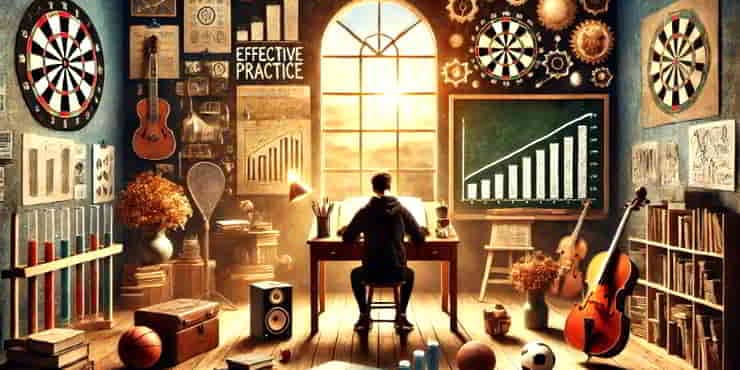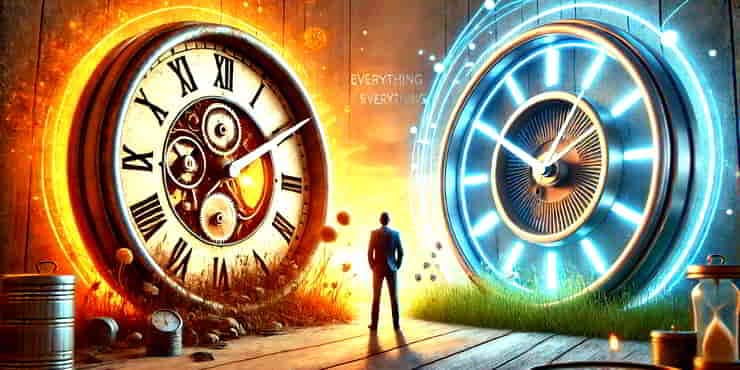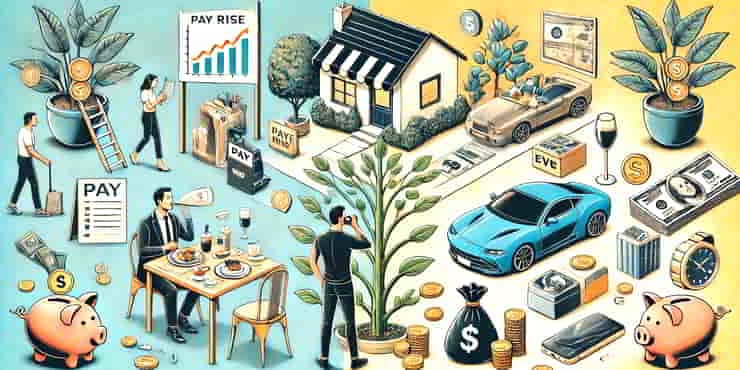The Potent Process Of Learning from Failure: Lessons for Future Triumphs

Estimated reading time: 8 Min
So here we take a trip from despair to triumph as we explore the potent process of learning from failure to light up our pathway to future victories.
Have you ever faced a setback so monumental that it felt like the very ground beneath you had given way?
The sting of failure, a universal human experience, can either shatter our spirit or sculpt us into more resilient beings.
History is peppered with tales of luminaries who, after facing crushing defeats, rose like phoenixes from their ashes.
This is about understanding that within the heart of failure lie the seeds of success.
In this exploration, we’ll take a look at the anatomy of failure and unearth the lessons it holds for us.
The Psychology of Learning From Failure
Why does failure hit us like a freight train, leaving us in a daze and questioning our worth?
It’s all down to our brains.
Humans are wired to experience intense emotions in response to failure; it’s a primal reaction rooted in our evolutionary past.
But here’s where it gets interesting: the way we interpret and react to failure is governed by our mindset.
There are generally two types of mindsets that come into play: the ‘fixed mindset’ and the ‘growth mindset’.
The fixed mindset is like being shackled; it convinces us our abilities are static, making every failure feel like a direct hit to our self-worth.
On the other hand, a growth mindset provides the wings on our back, allowing us to view failure as not a reflection of our innate abilities but as a valuable learning curve.
Understanding these mindsets offers the first key to transforming our relationship with failure.
By consciously shifting towards a growth mindset, we start to see failures not as insurmountable walls but as hurdles that are not only jumpable but essential for our growth.
The question then is not ‘Why did I fail?’, but ‘What can I learn from this?’
Historical Examples of Triumph Over Failure
Let’s turn the pages of history for a moment.
Did you know that Thomas Edison, the inventor of the light bulb, failed over 10,000 times before he saw the light, quite literally?

Or that twelve publishing houses rejected J.K. Rowling, the author of the Harry Potter series, before her magical world found a home?
These aren’t just anecdotes; they are testaments to the power of perseverance.
The common thread binding these stories is not just relentless effort but a profound shift in perspective.
Each failure was a lesson in disguise, a stepping stone towards a grander vision.
Edison’s thousands of “failed” experiments taught him invaluable lessons about electric light, leading him to the right combination of elements.
Rowling’s repeated rejections honed her story, making Harry Potter the beloved phenomenon it is today.
These examples underscore a crucial lesson: the path to success is often littered with apparent failures.
But it’s those very failures, when approached with a mindset of learning and persistence, that pave the way to success.
The Role of Resilience and Grit
Resilience and grit—these aren’t just buzzwords; they’re the backbone of success in the face of failure.
But what do they mean, exactly?
Resilience is our ability to bounce back from setbacks, and stand up after being knocked down.
Grit, on the other hand, is about persistence—the relentless pursuit of our goals in the face of obstacles.
Cultivating these qualities isn’t about denying the pain or frustration that comes with failure.
Instead, it’s about acknowledging our emotions and then moving forward with determination and a clear plan.
It’s about looking at the bigger picture and understanding that every setback is temporary and that persistence will eventually lead to success.
But how do we build resilience and grit?
It starts with setting small, achievable goals, celebrating the small victories, and gradually pushing our boundaries.
It’s about creating a support network of friends, family, or mentors who can provide perspective and encouragement.
And crucially, it’s about self-compassion—treating ourselves with kindness and understanding during our lowest moments, which fuels our courage to try again.
Practical Steps to Learning from Failure
So, how do we transform the bitter pill of failure into a catalyst for growth?
The journey begins with reflection. Instead of burying the experience or wallowing in regret, take a step back and dissect the situation.
What went wrong?
What could you have done differently?
This isn’t about self-blame but about constructive self-assessment.
The next step is to seek feedback.
It might sting, but external perspectives can shine a light on blind spots we never knew we had.
Approach someone you trust, someone who will be honest but supportive, and ask them for their take on your failed endeavour.
Armed with this new knowledge, it’s time to plan your next moves.
Set clear, achievable goals based on what you’ve learned.
This plan should be your roadmap out of the quagmire of failure, a tangible set of steps you can take to move forward.
Finally, embrace resilience and get back out there.
Apply what you’ve learned, but do so with patience and persistence.
Remember, really, that failure is not the opposite of success; it’s feedback on the journey towards it.
Integrating Failure into Your Personal and Professional Life
Imagine a world where failure is not a source of shame but a badge of courage, a sign that you dared to try.
Creating such an environment, whether at home, at work, or within yourself, can transform failure from a roadblock to a stepping stone.
Start by changing the narrative around failure.
Celebrate the risks taken, not just the outcomes.
When you or someone else fails, focus on the effort and the lessons learned rather than the failure itself.
This shift in perspective can foster an environment where people feel safe to innovate, experiment, and ultimately grow.
Encourage open conversations about failure.
Share your own experiences and what they taught you.
This not only humanises you but also creates a culture of trust and continuous learning.
Remember, the goal isn’t to eliminate failure but to demystify and learn from it.
Turning Failure into Success: Real-life Examples
Let’s bring our discussion to life with real stories.
Consider Sarah, who launched a start-up that failed within a year.
Instead of retreating, she used the experience to learn about market research, management, and the importance of a clear value proposition.
Her next venture was a success because she applied these lessons.
Or take Michael, an aspiring novelist who faced rejection after rejection.
He used the feedback to refine his writing and narrative skills.
Today, he’s a best-selling author because he chose to see each rejection as a step closer to his goal.
Your story could be the next.
Whether it’s a failed business, a rejected proposal, or a personal setback, each failure holds the seeds of your future success.
Embrace them, learn from them, and keep moving forward.
FAQs
What is a fixed mindset, and how does it affect learning from failure?
A fixed mindset is the belief that one’s abilities, intelligence, and talents are fixed traits. People with a fixed mindset tend to avoid challenges, give up easily, and see failure as a reflection of their abilities, which can hinder learning and growth.
How does a growth mindset change one’s approach to failure?
A growth mindset is the belief that abilities can be developed through dedication and hard work. This perspective encourages viewing failure as an opportunity for growth and learning, leading to more resilience and perseverance.
Can you provide practical tips for developing resilience?
To develop resilience, start by setting realistic goals, maintaining a positive outlook, and building strong personal connections. Embrace challenges as opportunities for growth, and practice self-compassion to recover from setbacks more effectively.
Why is feedback important after a failure?
Feedback provides critical insights into what went wrong and how to improve. It helps identify blind spots, refines strategies, and adjusts actions, which are crucial for learning and development after a failure.
How can I encourage a culture that embraces failure as a learning opportunity?
Create an environment where failure is seen as a part of learning and growth. Encourage open dialogue about failures and what they teach, recognise efforts and the learning process rather than just outcomes, and provide support and resources for recovery and reflection after setbacks.
Summary
Failure, as we’ve seen, isn’t the end of the road but a valuable signpost, pointing us towards deeper understanding and greater resilience.
I’d go so far as to say there’s no such thing as failure; it’s all feedback.
By embracing failure, learning from it, and applying those lessons, we can pave our way to future triumphs.
Remember, the most successful people are not those who never fail, but those who never quit.
So the next time you face a setback, take a deep breath, reflect, learn, and forge ahead with renewed determination.
After all, every failure is just another step on the staircase to success.
Have you turned a failure into a success?
Share your story in the comments below.
Let’s inspire each other with tales of resilience, learning, and triumph.
😉
Richard
Useful References
- Mindset Theory – Dweck, C. S. (2006). Mindset: The New Psychology of Success. Ballantine Books.
- This book introduces the concept of fixed and growth mindsets, elaborating on how these mindsets impact learning and personal growth.
- Historical Resilience: Goethals, G. R., & Sorenson, G. J. (2006). The Quest for a General Theory of Leadership. Edward Elgar Publishing.
- This text discusses the resilience and perseverance of historical figures like Thomas Edison and J.K. Rowling, providing insights into their journeys and the lessons they learned from failures.
- Psychology of Resilience: Southwick, S. M., & Charney, D. S. (2012). Resilience: The Science of Mastering Life’s Greatest Challenges. Cambridge University Press.
- This book explores the psychological basis of resilience and grit, offering strategies for developing these qualities in the face of setbacks.
- Learning from Failure: McGrath, R. G. (2011). Failing by Design. Harvard Business Review.
- This article discusses the importance of planning for failures and learning from them to foster innovation and growth in business.
- Feedback and Growth: Stone, D., & Heen, S. (2014). Thanks for the Feedback: The Science and Art of Receiving Feedback Well. Penguin Books.
- This guide helps readers understand how to receive and use feedback effectively to make meaningful changes and improvements.







I won’t talk like with a special joke I am serious
That’s good to hear, Mohamed. I wish you and yours the very best for 2025. 😉 Richard